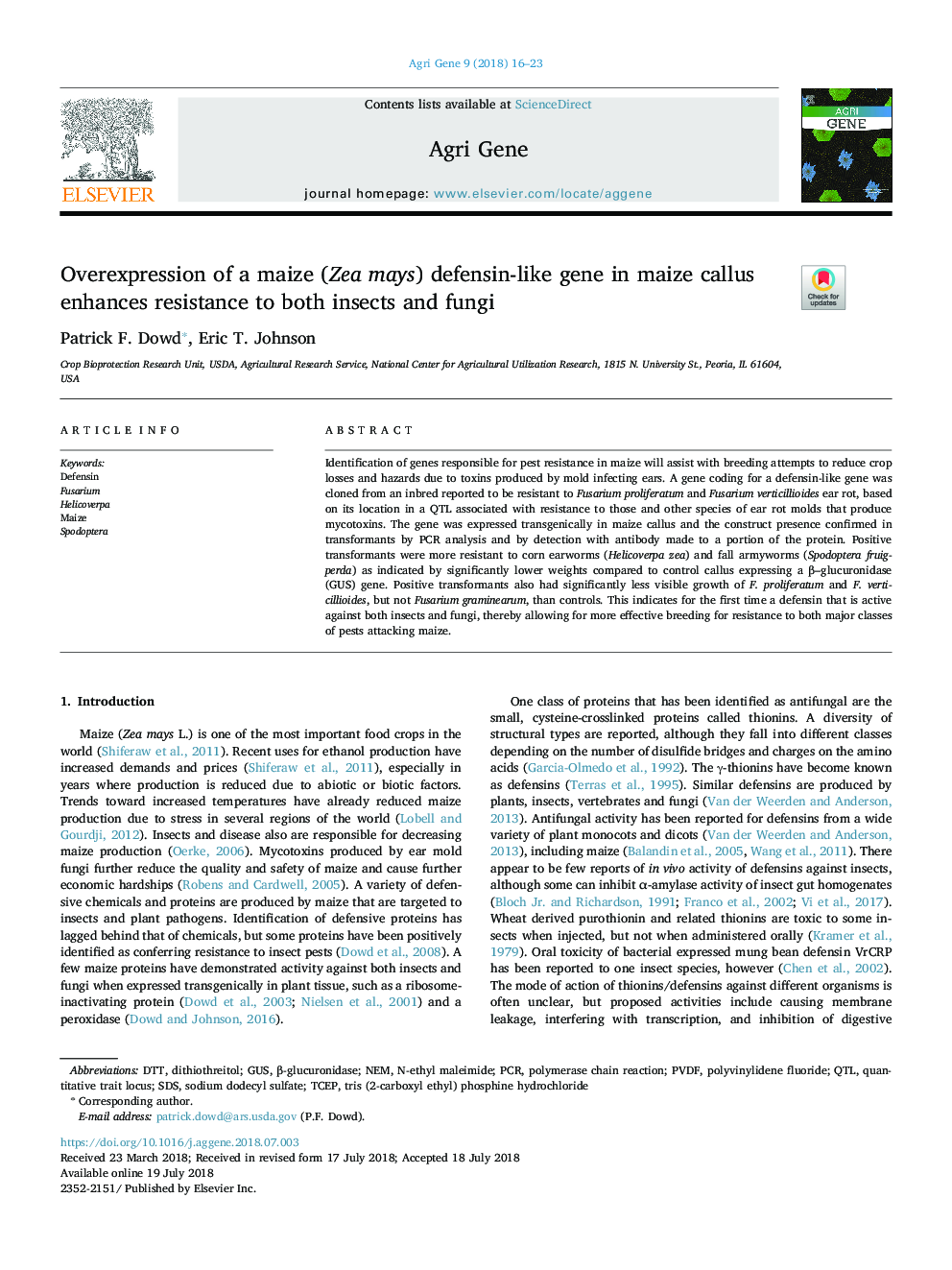| Article ID | Journal | Published Year | Pages | File Type |
|---|---|---|---|---|
| 8634869 | Agri Gene | 2018 | 8 Pages |
Abstract
Identification of genes responsible for pest resistance in maize will assist with breeding attempts to reduce crop losses and hazards due to toxins produced by mold infecting ears. A gene coding for a defensin-like gene was cloned from an inbred reported to be resistant to Fusarium proliferatum and Fusarium verticillioides ear rot, based on its location in a QTL associated with resistance to those and other species of ear rot molds that produce mycotoxins. The gene was expressed transgenically in maize callus and the construct presence confirmed in transformants by PCR analysis and by detection with antibody made to a portion of the protein. Positive transformants were more resistant to corn earworms (Helicoverpa zea) and fall armyworms (Spodoptera fruigperda) as indicated by significantly lower weights compared to control callus expressing a β-glucuronidase (GUS) gene. Positive transformants also had significantly less visible growth of F. proliferatum and F. verticillioides, but not Fusarium graminearum, than controls. This indicates for the first time a defensin that is active against both insects and fungi, thereby allowing for more effective breeding for resistance to both major classes of pests attacking maize.
Keywords
Related Topics
Life Sciences
Agricultural and Biological Sciences
Animal Science and Zoology
Authors
Patrick F. Dowd, Eric T. Johnson,
